Emmer Sewell (born 1934) is an African-American contemporary artist. [1] Sewell is known for her sculptures made of found objects. [2] [3] Her work is included in the collection of the Metropolitan Museum of Art. [4]
Emmer Sewell (born 1934) is an African-American contemporary artist. [1] Sewell is known for her sculptures made of found objects. [2] [3] Her work is included in the collection of the Metropolitan Museum of Art. [4]
Sewell was born in Perry County, Alabama, growing up on a farm near the town of Marion. [5] She was one of fourteen children born to Patrick Sanders, a dairy employee. [6] Her parents were strict and organized, frequently mobilizing the children to harvest crops, tend to or slaughter their cattle, or immaculately clean the house and surrounding fields. Sewell's first memories of drawing came from the rests she would take during harvests. She would sculpt and draw in the open patches of mud on her parents' property. Sewell carries her parents' habitual, ritual cleaning into her work, as she is constantly tidying, sweeping her yard, and rearranging its contents to make her charms and protective sculptures.
A performative child, Sewell excelled in school, particularly in music, performing arts, and arithmetic. Although most of her work is contained on her property, cumulatively, her oeuvre reads as a series of stages where her knowledge and spirituality perform. [1]
Sewell's work undulates through her childhood home and stretches from the road to the back edges of her property. Mundane objects such as mailboxes and old refrigerators become vessels for history and Sewell's personal spirituality, which is a syncretism of southern American Christianity and West African-derived ancestor propitiation.
An X with dots in each quadrant also pervades her work. Sewell described " I put it on refrigerators and those things—symbols of God." Comparing this symbol to ancient Roman symbols that are now ubiquitous, "That is a sign of history. That sign is a great symbol of things. It’s no mean thing to it, nothing devilish in it. It is not. It is a symbol to recognize by. It is a symbol of recognized ways...Them little dots in it make it a star. Let you know you got good running. Knowledge can make you be a star You can use your knowledge and background." [1]
Other notable assemblages include a generations-old doghouse bordering the woods, many Black Panther inspired scarecrows, which stand guard against animals in her crops and people entering her property, and shrines to ancestors or biblical tales which are assembled on tree branches. [6]
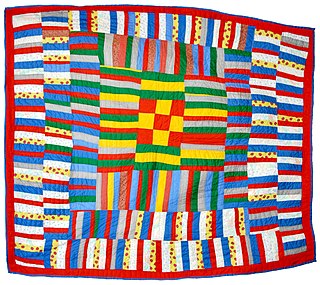
The quilts of Gee's Bend are quilts created by a group of women and their ancestors who live or have lived in the isolated African-American hamlet of Gee's Bend, Alabama along the Alabama River. The quilts of Gee's Bend are among the most important African-American visual and cultural contributions to the history of art within the United States. Arlonzia Pettway, Annie Mae Young and Mary Lee Bendolph are among some of the most notable quilters from Gee's Bend. Many of the residents in the community can trace their ancestry back to enslaved people from the Pettway Plantation. Arlonzia Pettway can recall her grandmother's stories of her ancestors, specifically of Dinah Miller, who was brought to the United States by slave ship in 1859.
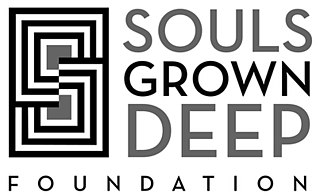
Souls Grown Deep Foundation is a non-profit organization dedicated to documenting, preserving, and promoting the work of leading contemporary African American artists from the Southeastern United States. Its mission is to include their contributions in the canon of American art history through acquisitions from its collection by major museums, as well as through exhibitions, programs, and publications. The foundation derives its name from a 1921 poem by Langston Hughes (1902–1967) titled "The Negro Speaks of Rivers," the last line of which is "My soul has grown deep like the rivers.
Emma Lee Pettway Campbell (1928–2002) was an American artist associated with the Gee's Bend group of quilters. She was included in the 2013 History Refused to Die exhibition at the Metropolitan Museum of Art. Her work is included in the collection of the Metropolitan Museum of Art, to which it was donated by the Souls Grown Deep Foundation.
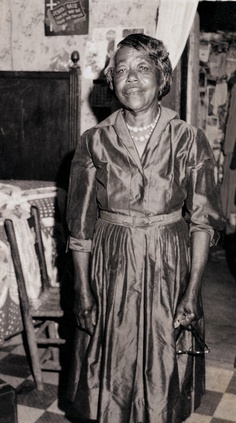
Willie Abrams (1897–1987), also known as Ma Willie, was an American artist. She was a member of the Freedom Quilting Bee, along with her daughter Estelle Witherspoon, and is associated with the Gee's Bend quilters. Her work is included in the collection of the Metropolitan Museum of Art.
Loretta Pettway Bennett is an American artist. She is associated with the Freedom Quilting Bee, where her mother, Qunnie Pettway, worked, and with the Gee's Bend quilt-makers. Her quilts Sew Low and Vegetation are part of the Eskenazi Health Art Collection.
Annie Mae Young (1928–2013) was an American artist associated with the Gee's Bend group of quilters. Her daughter, Nellie Mae Abrams, was also a quilter.
Martha Jane Pettway (1898–2003) was an American artist associated with the Gee's Bend group of quilters. Pettway was born in Gee's Bend, Alabama and lived her entire life there. Her work is included in the collection of the Philadelphia Museum of Art and the Metropolitan Museum of Art.
Mary Elizabeth Kennedy (1911–1991) is an American artist associated with the Gee's Bend group of quilters. Her work is included in the collection of the Metropolitan Museum of Art.
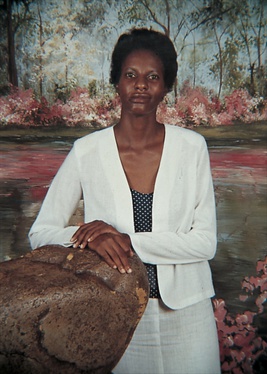
Linda Diane Bennett (1955–1988) was an American artist associated with the Gee's Bend group of quilters.
Irene Williams (1920–2015) was an American artist. She is associated with the Gee's Bend quilting collective, although she made her quilts "in solitude" and "uninfluenced." Her work has been exhibited at the Museum of Fine Arts, Houston and the Frist Art Museum, and is included in the collections of the Philadelphia Museum of Art, the Indianapolis Museum of Art, the Museum of Fine Arts Boston, and the National Gallery of Art.

Georgia Speller (1931–1988) was an African American artist known for her colorful, dynamic drawings and paintings on paper.
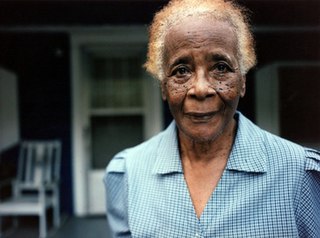
Polly Mooney Bennett (1922–2003) was an American artist. She is associated with the Gee's Bend quilting collective and was a member of the Freedom Quilting Bee. Her work has been exhibited in the Museum of Fine Arts, Houston.
Mertlene Perkins (1917–2015) was an American artist. She is associated with the Gee's Bend quilting collective. Her work has been exhibited at the Museum of Fine Arts, Houston and is included in the collection of the Metropolitan Museum of Art.
Lucy T. Pettway (1921–2004) was an American artist. She is associated with the Gee's Bend quilting collective. Her work has been exhibited at the Museum of Fine Arts, Houston and the Frist Art Museum, and is included in the collection of the Metropolitan Museum of Art.
Flora Moore is an American artist associated with the Gee's Bend group of quilters.
Mary L. Bennett is an American artist. She is associated with the Gee's Bend quilting collective. Bennett came from a family of quilters originating with the matriarch of the family her grandmother, Delia Bennett. Her work is included in the collection of the Museum of Fine Arts, Houston, and National Gallery of Art.
Rachel Carey George (1908–2011) was an American artist. She is associated with the Gee's Bend quilting collective, alongside her aunt Delia Bennett. Her work is included in the collection of the Museum of Fine Arts, Houston.
Amelia Bennett (1914–2002) was an American artist. She is associated with the Gee's Bend quilting collective. Her work has been exhibited at the Museum of Fine Arts, Houston and is included in the collection of the Dallas Museum of Art.

Eldren "E. M." Bailey (1903–1987) was an African American artist best known for his large cement sculptures, which he often displayed in his front yard. Born in Flovilla, Georgia, Bailey spent most of his life and career in Atlanta, Georgia.
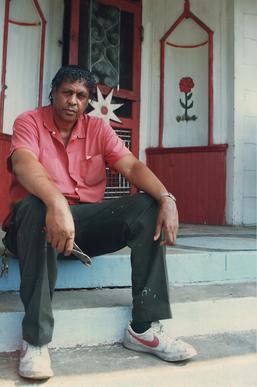
Joe Louis Light (1934–2005) was an American painter from Dyersburg, Tennessee. His work focuses on transcendentalism, attaining spiritual or moral enlightenment, and the balance and order of the universe.